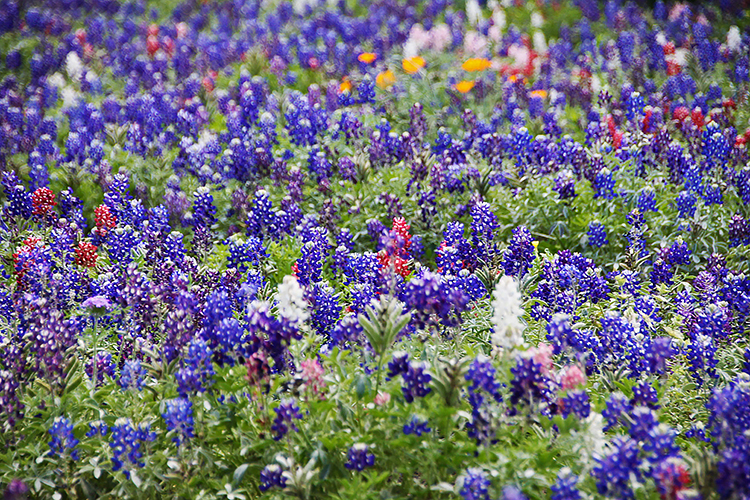More than anything, the wet and relatively cool weather we’re experiencing now has brought us a healthy crop of wild-blooming Austin flowers, which we’ll likely be able to enjoy well into May along our roadways and in our many green spaces. If you’ve been missing spring, now’s your chance to get your backside outside and soak in nature’s beauty!
On that note, we’ve put together this short guide to help you identify the 10 native, wild-growing Austin flowers you’re most likely to encounter during your spring adventures and bluebonnet photo-ops. Enjoy!
1.) The Texas Bluebonnet
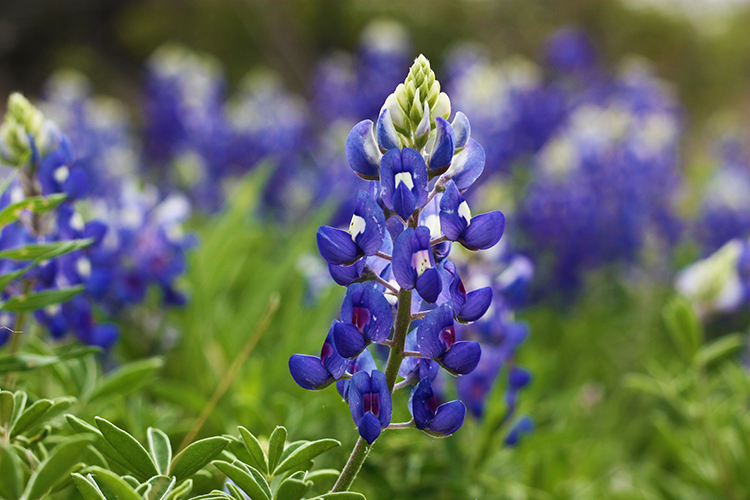
Texas Bluebonnets. Photo: Flickr user gilldrums73, CC licensed
Also known as: Texas Lupine, Buffalo Clover, Wolf Flower
As our state flower, the Texas Bluebonnet — aka. Lupinus texensis — is undoubtedly the most widely known native Texas wildflower. Despite that, we’ve still managed to round up 7 facts about this iconic annual that most folks aren’t aware of, so definitely check that out along with Lady Bird Johnson Wildflower Center’s listing for the Texas Bluebonnet in their online database if you’d like to learn more.
You also really need to see Over Austin‘s flyover drone footage of a field that possibly contains a billion bluebonnets. We drool over it, like, every day.
2.) The Indian Paintbrush
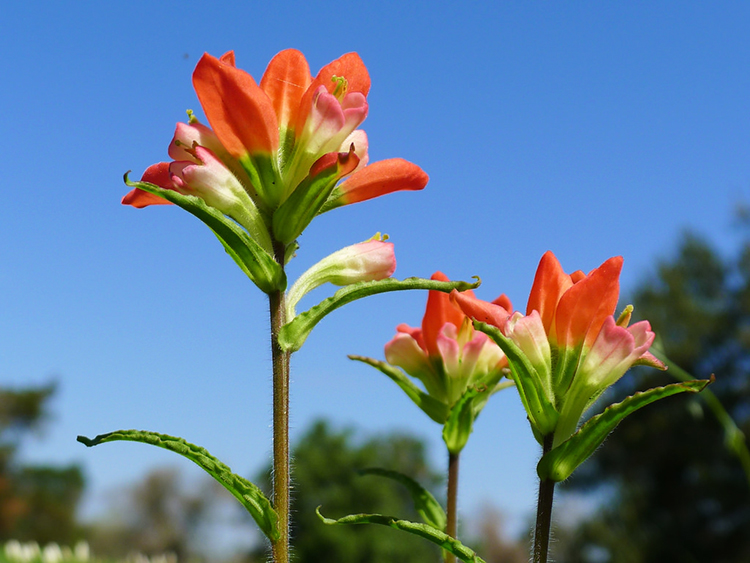
Indian Paintbrushes. Photo: Flickr user 3w4v, CC licensed
Also known as: Scarlet Paintbrush
The Indian Paintbrush, or Castilleja indivisa, is easily the Texas hill country‘s second most prolific wildflower. Paintbrushes are super easy to recognize, since they tend to grow taller than other native Texas wildflowers and are usually bright red — although some can be yellow or white. To learn more about this gorgeous bloom, check out LBJWC’s online database listing for the Paintbrush.
3.) The Indian Blanket
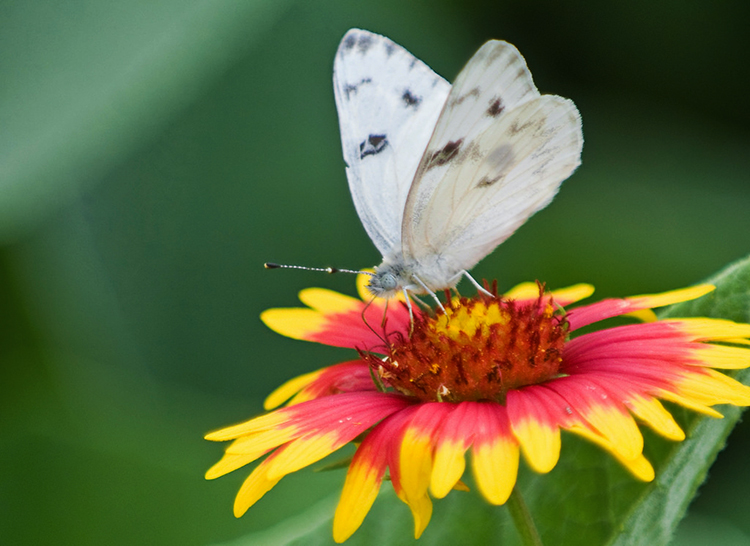
Indian Blanket and checkered white butterfly. Photo: Flickr user Jim McCulloch, CC licensed
Also known as: Firewheel
Known to botanists as Gaillardia pulchella, the Indian Blanket is a gorgeous “pinwheel” type wildflower that you’re probably seeing intermixed with Indian Paintbrushes and Bluebonnets along Austin’s highways. They’re super drought hardy and love basking in full sunlight — like all true Texans.
Now, don’t get this bloom confused with Coreopsis tinctoria, a really similar native wildflower that tends to grow in the same areas. Compare LBJWC’s listings for the Indian Blanket and Coreopsis to get educated about which flower is which!
4.) The Black-eyed Susan

Black-eyed Susans. Photo: Flickr user junger!, CC licensed
Also known as: Brown-eyed Susan
The Black-eyed Susan (Rudbeckia hirta) is a lovely daisy-like wildflower that sports yellow, red, and orange markings and a brown conical center that looks like the top of a hat. It also resembles to the slightly more simple Greenthread bloom (Thelesperma filifolium), which is also native to Texas.
As usual, LBJWC can help you figure out which flower you’re looking at (Black-eyed Susan; Greenthread), so don’t hesitate to use their online database as an wildflower identification resource.
5.) The Winecup
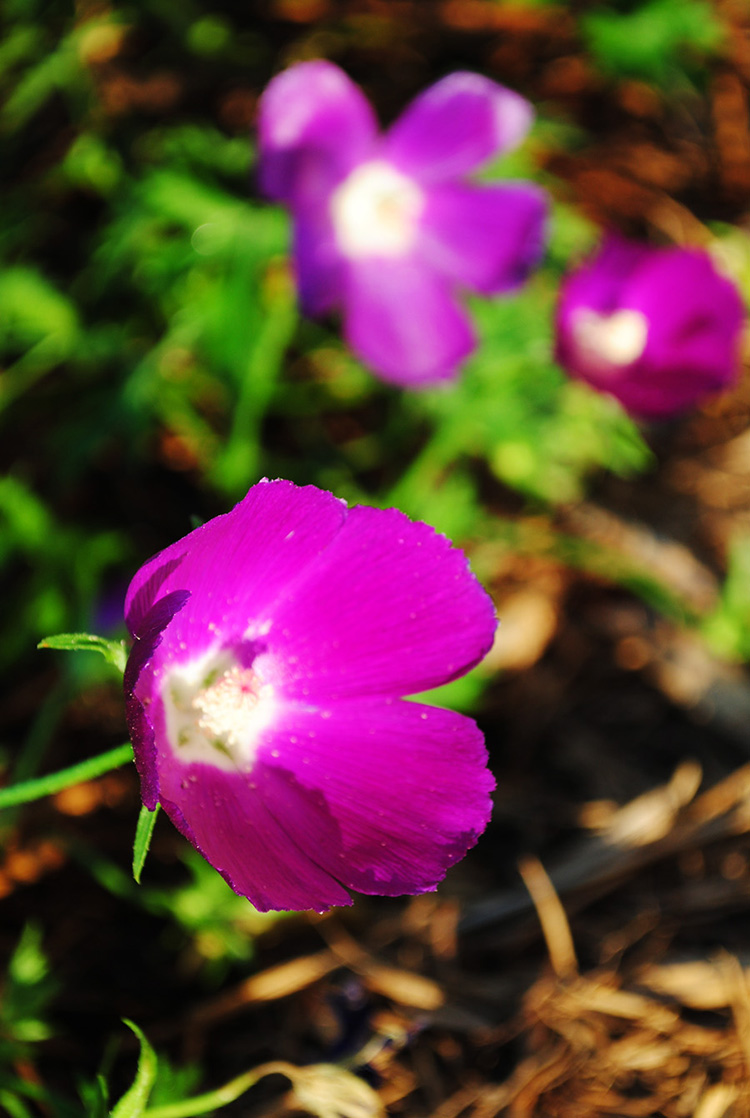
Winecups. Photo: Flickr user Sandy Schultz, CC licensed
Also known as: Purple poppy-mallow
Named for their deep pink to purple color and chalice shape, Winecups (Callirhoe involucrata) open up in the mornings and close in the evenings. Like other widespread Texas wildflowers, they can handle harsh sunlight and drought, despite their delicate build! Read through LBJWC’s plant database guide listing for the Winecup to get more info!
6.) The Pink Evening Primrose

Pink Evening Primroses. Photo: Flickr user Patrick Standish, CC licensed
Also known as: Buttercup, Pink Lady, Showy Primrose
Though many Texans label them as “Buttercups” or “Pink Ladies,” these delicate white and pink veined flowers are more officially called “Pink Evening Primroses.” Oenothera speciosa are native from Texas all the way up to Nebraska; in the northern areas of their range, they open in the evenings and close back up in the mornings, but in Texas, they do just the opposite and can tolerate heavy sun — probably because everything’s tougher (and bigger, better, etc.) in Texas.
For additional information, check LBJWC’s online database article here!
7.) Blue Eyed Grass
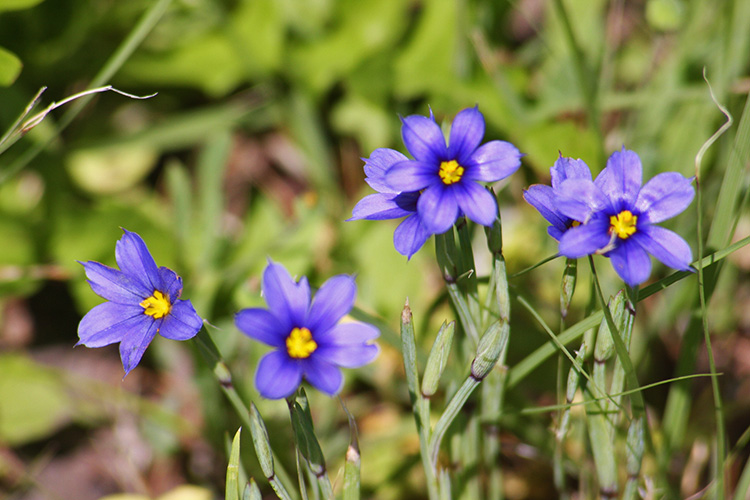
Blue-Eyed Grass. Photo: Flickr user Cliff Hand, CC licensed
Also known as: Dotted / Southern / Narrowleaf / Bermuda Blue-Eyed Grass
You’ll have to look close to the ground to find Blue-eyed grass, but once you start looking, you’ll find at least two different varieties of these tiny bluish to purple blooms (Sisyrinchium angustifolium and langloisii) in abundance! According to Lady Bird Johnson Wildflower Center, both species belong to the Iris family. Weird.
8.) The Mexican Hat

Mexican Hats. Photo: Flickr user Bob Schrader, CC licensed
Also known as: Prairie Coneflower, Mexican Coneflower, Thimbleflower
This unique Texas wildflower is most widely known as the “Mexican Hat” flower because it looks a lot like a traditional sombrero. These colorful blooms can grow up to 3 feet tall and sport red and yellow, all red, or all yellow petals. To learn more about Ratibida columnifera, head over to LBJWC’s online plant directory.
9.) The Texas Prickly Pear

Prickly Pear. Photo: Flickr user J.H. Fearless, CC licensed
Also known as: Lindheimer’s Prickly Pear
In case you aren’t already aware, the Prickly Pear is the State Plant of Texas, so its beautiful yellow (and sometimes red) blooms have definitely earned a place among Texas’ top wildflowers. While the phrase “Prickly Pear cactus” can refer to a variety of cacti, the most widely distributed species in Texas is Opuntia engelmannii var. lindheimeri, shown above. Find out more through LBJWC.
10.) The Rain Lily

Rain Lilies. Photo: Flickr user John Hayes, CC licensed
Also known as: Flor de Mayo, Prairie Lily
If you have your own backyard or spend any time exploring Austin’s natural areas, you’ve probably encountered Rain Lilies. Throughout the spring and even into early summer, white Cooperia pedunctulata flowers will spring up suddenly several days after decent rains. Be on the lookout for them this spring! To learn more, visit LBJWC’s website.
We created this guide to help you to identify some of of the most common Austin flowers, but this is by no means a comprehensive list of all of the flowers you’ll encounter if you walk or ride down the Barton Creek Greenbelt Trail or the newly-formed Violet Crown Trail.
You should also stay on the lookout for other spring beauties like: Drummond Phlox, Spotted Beebalm, Prairie Verbena, Texas Vervain, Common Sunflowers, Texas Thistles, Basket-Flowers, and White Prickly Poppies, as well as non-native invasive species like Bastard Cabbage.
Did this guide help you to successfully name an Austin flower that you found? Let us know on Facebook or Twitter. We also periodically post wildflower shots on our Instagram profile, so follow us there too if you like that sort of thing. Happy flower hunting!
———
Featured photo: Flickr user Texan Girl 05, CC licensed



